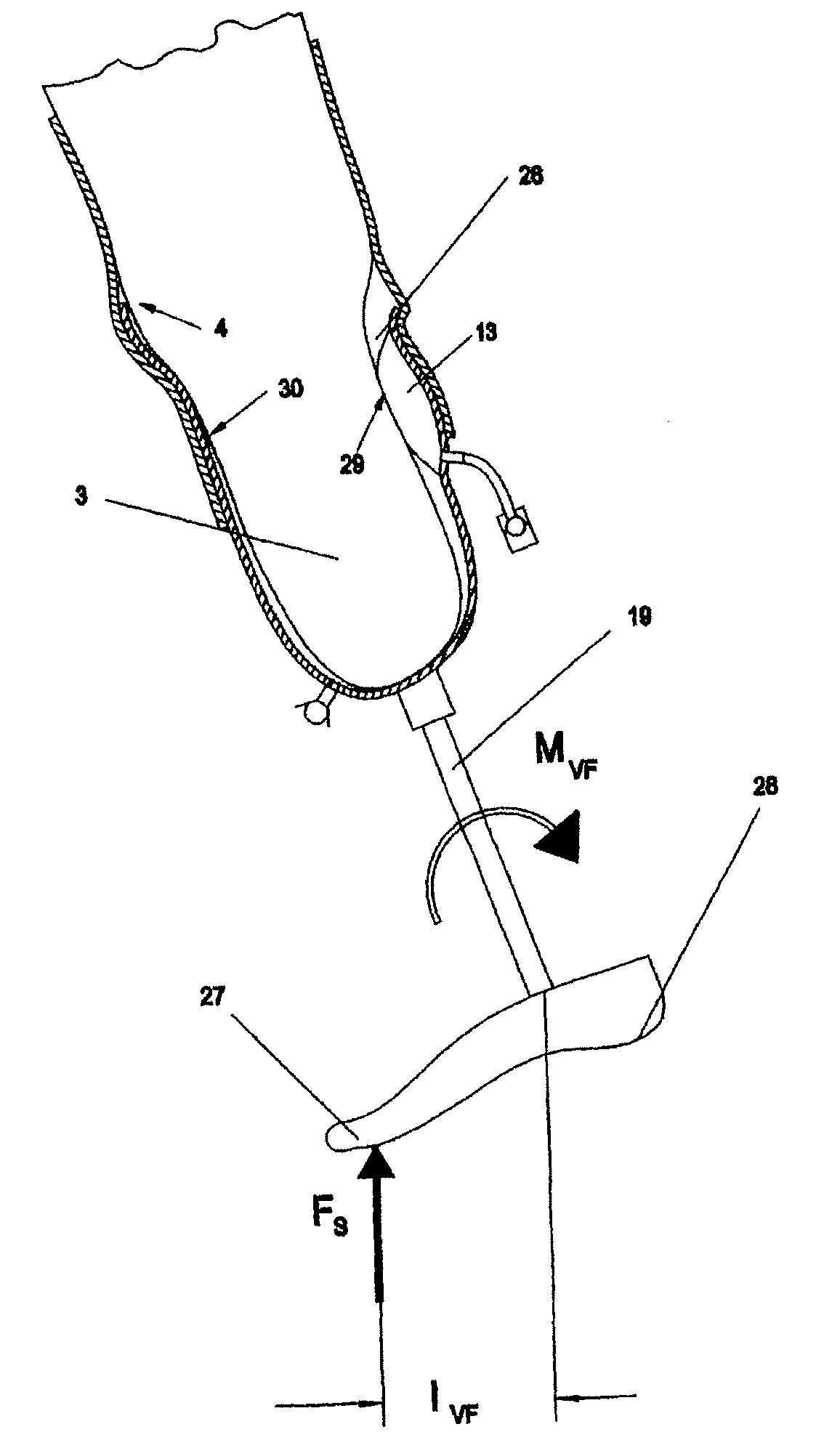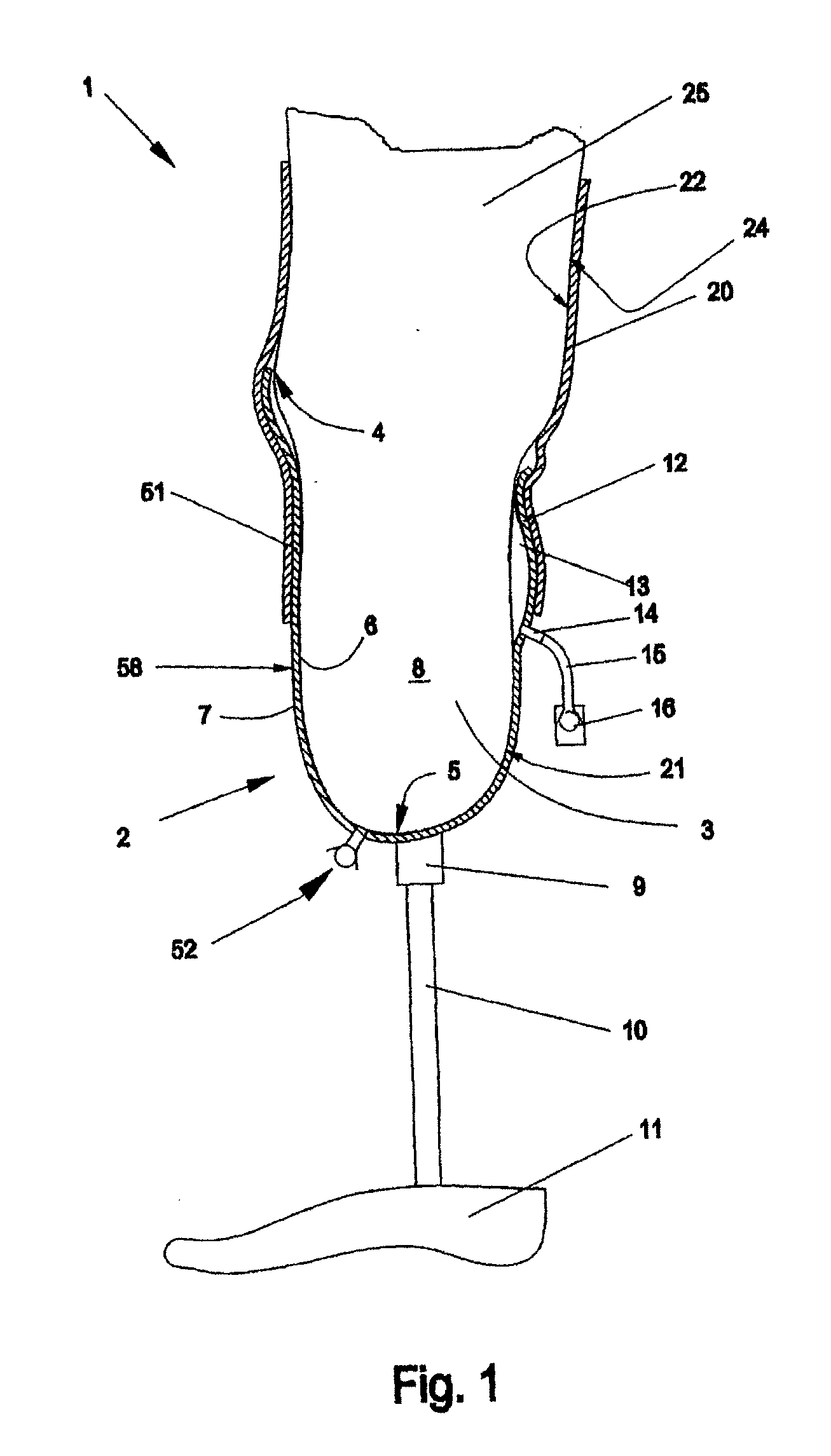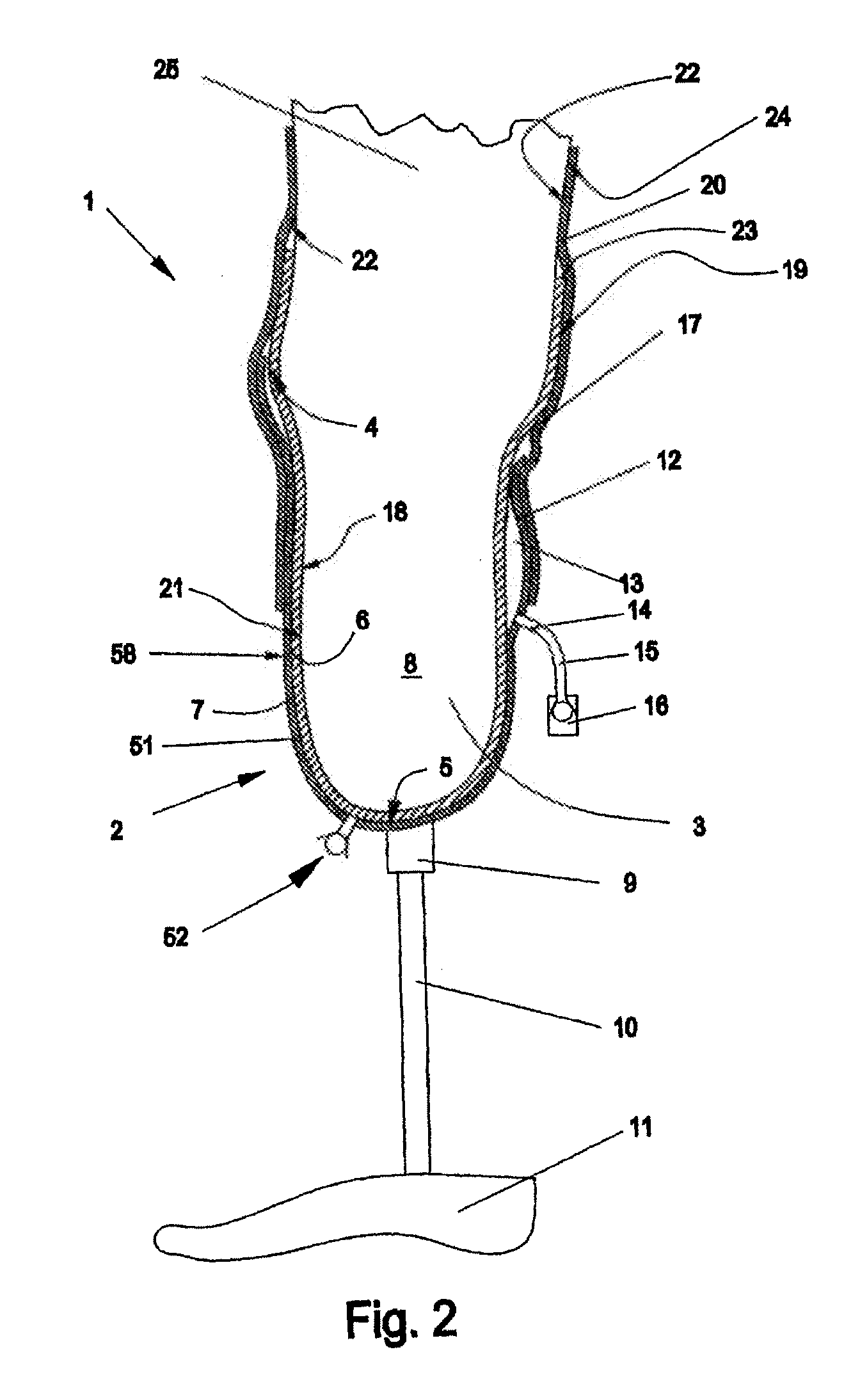Prosthesis shaft with active air release
- Summary
- Abstract
- Description
- Claims
- Application Information
AI Technical Summary
Benefits of technology
Problems solved by technology
Method used
Image
Examples
Embodiment Construction
[0034]FIG. 1 illustrates the invention, using the example of a below-knee prosthesis (1) which is shown cut away in the sagittal plane. The socket (2), which receives the stump (3) and is adapted to it, is substantially cup-shaped with an open end (4) at the top, and with a closed, lower end (5) directed toward the ground. The socket (2) has an inwardly directed inner face (6) and an outwardly directed outer face (7). The inner face (6) forms a cup-shaped space (8) that receives the stump (1). The socket (2) is connected to an artificial foot (11) via an adapter piece (9) which is secured on the socket (2) and which has a tubular extension part (10). In the illustrative embodiment of the invention shown here, the rear (dorsal) socket wall has, in the upper (proximal) area, an elongate oval bulge (12) which forms a space for receiving a pump chamber (13). Although the bulge (12) is not absolutely necessary in all cases, it is advantageous for avoiding pressure sores. It is only as de...
PUM
 Login to View More
Login to View More Abstract
Description
Claims
Application Information
 Login to View More
Login to View More - R&D
- Intellectual Property
- Life Sciences
- Materials
- Tech Scout
- Unparalleled Data Quality
- Higher Quality Content
- 60% Fewer Hallucinations
Browse by: Latest US Patents, China's latest patents, Technical Efficacy Thesaurus, Application Domain, Technology Topic, Popular Technical Reports.
© 2025 PatSnap. All rights reserved.Legal|Privacy policy|Modern Slavery Act Transparency Statement|Sitemap|About US| Contact US: help@patsnap.com



